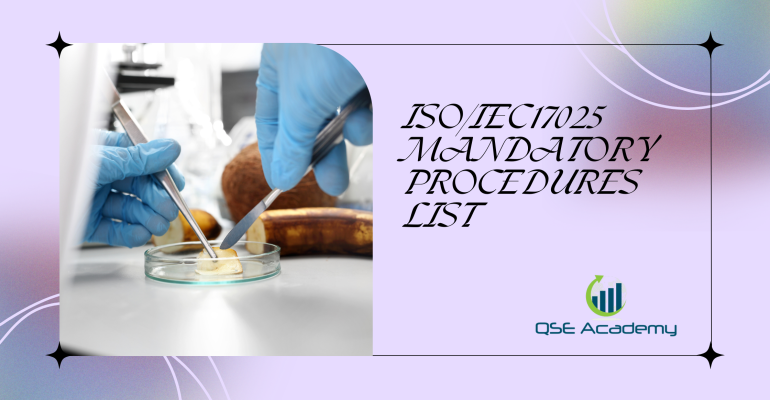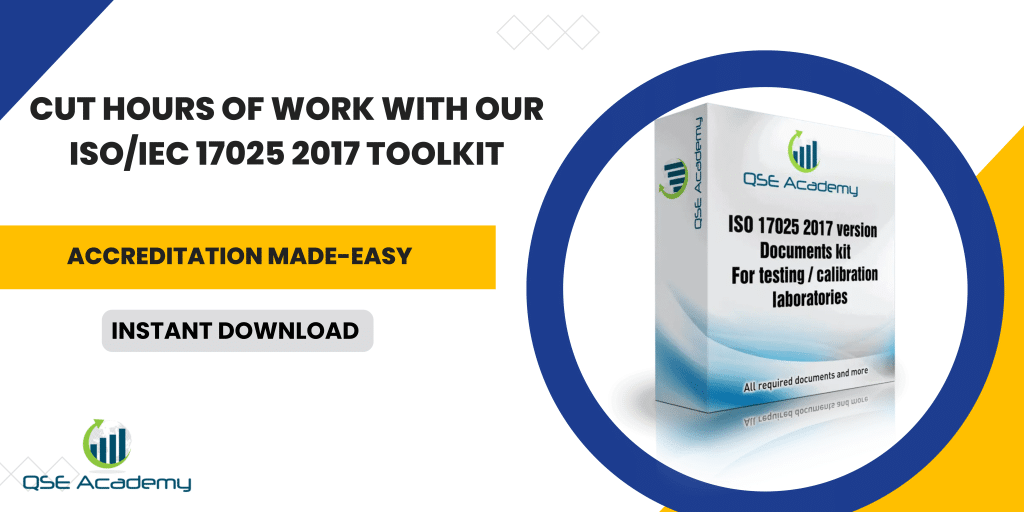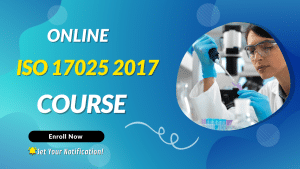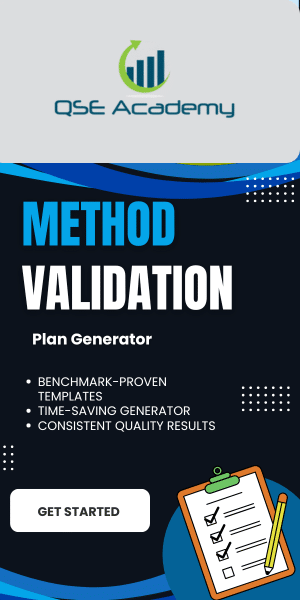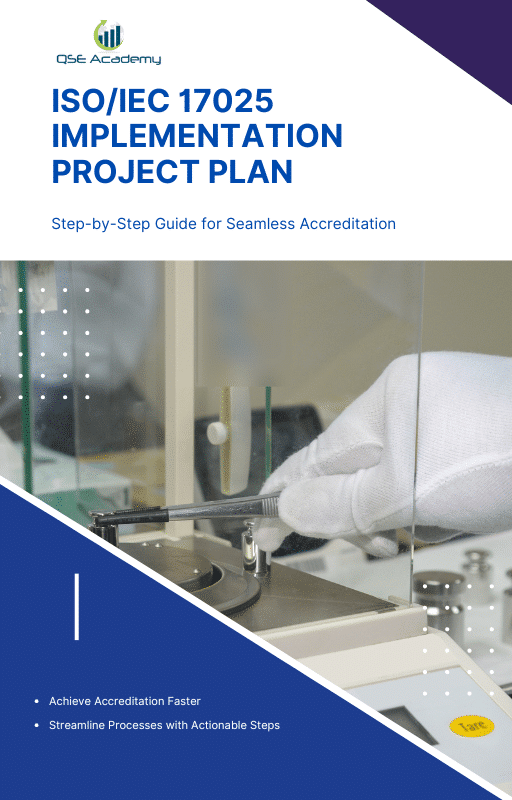ISO/IEC 17025 Mandatory Procedures List
Last Updated on October 13, 2025 by Melissa Lazaro
Understanding ISO/IEC 17025 Mandatory Procedures
If you’ve ever prepped for an ISO/IEC 17025 audit, you know the anxiety that hits when the auditor asks, “Can you show me your procedure for handling nonconforming work?”
That pause — that split second of uncertainty — is what we’re going to eliminate here.
I’ve worked with dozens of testing and calibration labs across industries — from environmental testing to calibration for manufacturing plants. And one thing I see often? Labs overcomplicate their documentation or miss key mandatory procedures altogether. Both lead to trouble.
Here’s the truth: ISO/IEC 17025 doesn’t ask for hundreds of documents. It asks for the right ones — the procedures that prove your lab is technically competent and consistently producing valid results.
In this guide, I’ll break down exactly which procedures are mandatory, why they matter, and how to keep them practical (not bureaucratic). You’ll also get a few pro tips from real audits — what works, what doesn’t, and how to make your documentation audit-ready without drowning in paperwork.
By the end, you’ll know:
-
Which procedures ISO/IEC 17025 explicitly requires
-
How to structure them so auditors see competence at first glance
-
The shortcuts experienced consultants use to make compliance manageable
Let’s start by clearing the confusion around what ISO/IEC 17025 actually expects from you.
The Foundation: What ISO/IEC 17025 Expects from Laboratories
Before diving into the list of mandatory procedures, it helps to step back and understand what ISO/IEC 17025 really wants from your lab.
It’s not about filling binders or impressing auditors with fancy templates — it’s about demonstrating competence and consistency.
Here’s what I’ve noticed:
Most labs think ISO 17025 is a “documentation exercise.” It’s not. It’s a competence standard. Every requirement — every clause — connects back to one simple question:
Can your lab consistently produce valid and reliable results?
To prove that, ISO 17025 expects two big things:
-
Technical competence — that your people, methods, and equipment can perform the work correctly.
-
A management system — that your processes are controlled, documented, and improved over time.
Now, not every part of the standard says “you must have a documented procedure.” But where it does, auditors expect to see one — clear, controlled, and actually used.
Pro Tip:
When you’re unsure whether a process needs a documented procedure, ask yourself: If the person who normally does this is out, could someone else follow the steps and get the same result?
If the answer is no — you probably need to write it down.
Common Mistake:
Some labs go to the other extreme and document everything — right down to how to make coffee in the lab. Over-documentation doesn’t impress auditors; it slows you down and creates gaps when things inevitably change.
This is important because the standard doesn’t reward paperwork — it rewards control and evidence. Your goal is a lean, accurate, and practical set of procedures that reflect how the lab actually works, not how someone thinks it should work.
Now that you’ve got the foundation, let’s look at the first set of mandatory procedures — those tied to your lab’s resources and competence.
Mandatory Procedures Under Clause 6 – Resource Requirements
Here’s where the real work begins. Clause 6 of ISO/IEC 17025 focuses on your resources — the people, equipment, facilities, and systems that make reliable testing or calibration possible.
In plain terms: this clause proves your lab actually has what it takes to do the job right.
In my experience, this is one of the first areas auditors zoom in on. They want to see not just fancy certificates on the wall but documented proof that your team and equipment are competent, calibrated, and under control.
Let’s break it down.
Personnel Competence and Authorization
You must have a clear, documented procedure showing:
-
How you assess staff competence
-
Who authorizes them to perform tests or calibrations
-
How you maintain training records and qualifications
Pro Tip:
Keep a “Competence Matrix” — one table that lists each employee, their authorized tests, training dates, and renewal schedules. It’s an instant auditor favorite.
What Goes Wrong:
Labs often assume that job titles prove competence. They don’t. Auditors want to see how you verified that person can actually perform the task — not just that they have a degree.
Equipment and Calibration Control
Your lab must have a procedure for:
-
Selecting, calibrating, maintaining, and verifying equipment
-
Managing equipment out of service or under repair
-
Recording calibration results and traceability
Example:
A temperature calibration lab might record every intermediate check using reference thermometers — documented, signed, and traceable.
Pro Tip:
Set reminders for equipment calibration in your quality calendar. Missing a single due date can raise a nonconformity during an audit.
Environmental Conditions
You also need a documented procedure for controlling and monitoring lab environmental conditions — temperature, humidity, cleanliness, and other factors that can affect your results.
Why it matters:
Even minor fluctuations in temperature or humidity can throw off measurements, especially for precision instruments.
Mandatory Procedures Under Clause 7 – Process Requirements
Clause 7 is where ISO/IEC 17025 gets into the how — the steps your lab takes to handle customer work from start to finish.
If Clause 6 was about your foundation, this one is about execution — and this is where most nonconformities show up.
I’ve seen labs that are spotless, well-equipped, and staffed by great people — but they lose points because their process control is inconsistent. Documentation helps keep that from happening.
Review of Requests, Tenders, and Contracts
Before you say “yes” to a job, you need a documented way to confirm your lab can actually do the work correctly.
This means verifying:
-
You understand the client’s requirements
-
You have the right methods, equipment, and qualified personnel
-
There are no conflicts of interest or ambiguities
Example:
One lab I worked with added a “contract review checklist” before every quote. It took them two minutes per job but eliminated 90 % of errors in scope definition.
Pro Tip:
Keep a record of this review — even a quick sign-off on a form or email trail. Auditors love traceability.
Selection, Verification, and Validation of Methods
If you develop or modify test methods, you must document how you verify or validate them.
Your procedure should explain:
-
How methods are chosen
-
How they’re validated (precision, accuracy, detection limit, etc.)
-
How changes are reviewed and approved
What Goes Wrong:
Labs often rely on “we’ve always done it this way.” That doesn’t count as validation. You need measurable evidence the method works as intended.
Pro Tip:
Keep validation data in an appendix or dedicated record — it keeps your procedure lean and your evidence strong.
Handling, Transport, and Storage of Test Items
You also need a documented procedure covering:
-
How samples are received, labeled, and stored
-
How you prevent contamination, damage, or mix-ups
-
How you track samples through the testing process
Example:
During an audit, one lab showed me a simple chain-of-custody form that tracked every step of a sample’s journey. The auditor smiled and said, “That’s control.”
Recording and Reporting of Results
Finally, you must have a clear process for how results are recorded, reviewed, and issued.
This includes version control of test reports, authorization, and how you correct errors if discovered later.
Pro Tip:
Have a short, separate procedure for “amended reports.” It’s a small detail that shows maturity in your management system.
Mandatory Procedures Under Clause 8 – Management System Requirements
Clause 8 is the backbone of how your lab keeps everything running smoothly — it’s about consistency, improvement, and control.
Think of it as your lab’s “operating rhythm.” Even if your testing is flawless, weak management system procedures can cause you to fail an audit faster than you think.
I’ve seen it happen: a technically brilliant lab gets cited because they didn’t document how they handle nonconforming work or forgot to schedule their internal audit. Clause 8 is where you lock in discipline.
Control of Documents and Records
You must have a documented procedure explaining:
-
How documents are approved before issue
-
How changes are tracked and authorized
-
How obsolete versions are controlled
-
How records are stored, protected, and retained
Example:
A calibration lab I helped once kept three versions of the same procedure floating around in different binders. During an audit, chaos. The fix? A single “Document Control Register” listing all current versions and revision dates — simple but bulletproof.
Pro Tip:
Digital document control systems make this painless, but even a spreadsheet works if it’s kept current and controlled.
Internal Audits
ISO/IEC 17025 expects you to audit yourself — not just to tick a box, but to uncover gaps before the external auditor does.
Your procedure should cover:
-
Audit frequency
-
Who performs audits (must be impartial)
-
How findings are reported and followed up
What Goes Wrong:
Many labs assign audits to the same person who manages the process being audited. That’s a red flag. Auditors will catch it every time.
Pro Tip:
Rotate audit responsibilities or cross-train staff to audit different areas. It keeps things fresh and objective.
Management Review
You also need a clear process for how top management reviews system performance.
It should include:
-
Audit results
-
Nonconformities and corrective actions
-
Client feedback
-
Resource needs and improvement opportunities
Why it matters:
This isn’t just a meeting for the sake of compliance. A strong management review turns your audit data into action.
Corrective Actions and Handling Nonconforming Work
Two separate but related procedures:
-
Nonconforming work: What you do when results are found invalid or tests deviate from the plan.
-
Corrective action: How you investigate the root cause and prevent it from happening again.
Example:
One client used a “5 Why” form to track each issue — simple, fast, and effective. It showed auditors that their corrections weren’t guesses; they were rooted in analysis.
Pro Tip:
Never mark a corrective action “closed” without verifying effectiveness. Auditors look for that follow-up step every time.
Risk Management and Improvement
Clause 8 also asks labs to identify risks and opportunities that could affect quality.
You can cover this in one procedure outlining how risks are logged, reviewed, and mitigated.
Pro Tip:
Keep it practical. A one-page risk register is better than a 20-page policy no one reads.
Additional Recommended Procedures (Beyond the Minimum Requirements)
Now that we’ve covered what ISO/IEC 17025 requires, let’s talk about what smart labs choose to include.
These aren’t “mandatory” by the standard — but in my experience, they separate a smooth, well-managed lab from one that’s constantly firefighting before audits.
When you’ve worked with as many labs as I have, you start seeing patterns: the ones that build a few extra but practical procedures almost always score higher with auditors — and they save themselves a lot of stress later.
Customer Feedback and Complaint Handling
Even though not explicitly required, having a simple, documented way to handle client feedback is a game-changer.
It shows you care about continual improvement and customer satisfaction — two things accreditation bodies always notice.
Example:
One testing lab I worked with added a single-page complaint handling log. Within months, they caught small issues (like delayed reports) before clients even complained. That’s what a mature system looks like.
Pro Tip:
Track not just complaints, but compliments too — they help during management reviews to show balanced performance data.
Supplier Evaluation and Approval
If your results depend on calibration services, reference materials, or subcontracted work, you should have a procedure for evaluating and approving suppliers.
It helps prove traceability and control over your entire testing chain.
What Goes Wrong:
Labs often assume “accredited supplier = automatically approved.” Not quite. You still need a record showing you reviewed their certificate and performance.
Pro Tip:
Keep a “Supplier Register” — one line per vendor with their approval status, last evaluation date, and accreditation details. Takes five minutes to maintain and saves you ten during an audit.
Preventive Maintenance and Equipment Scheduling
This isn’t a formal ISO 17025 requirement, but it’s essential for consistency.
A preventive maintenance schedule ensures your equipment performs reliably between calibrations.
Example:
A calibration lab I supported used color-coded stickers to mark due dates for maintenance and calibration. Every technician knew at a glance what was current — no confusion, no surprises.
Pro Tip:
Integrate maintenance reminders into your document control or quality calendar so they never get missed.
Training and Competence Development Plan
While competence assessment is mandatory (under Clause 6), many labs go further by building a full training and development plan.
This makes your lab proactive — not just compliant.
Pro Tip:
Include short refreshers or cross-training sessions. They strengthen your team’s flexibility and reduce risk if someone’s out sick during an audit week.
Simplifying Compliance: Building Your ISO/IEC 17025 Procedure Library
At this point, you might be thinking, “That’s a lot of procedures — how do I keep them all organized without going insane?”
Good question. This is where structure and simplicity make all the difference.
When I help labs build their ISO/IEC 17025 systems, I always say:
“If your team can’t find the right procedure in under 30 seconds, your system isn’t serving you — you’re serving it.”
Your documentation should make daily work easier, not harder. Let’s break down how to make that happen.
Organize by Clause and Function
Start by grouping your procedures under the relevant ISO/IEC 17025 clauses:
-
Clause 6: Resources
-
Clause 7: Process requirements
-
Clause 8: Management system
Then, within each, arrange them by logical flow — for example: personnel → equipment → methods → reports → audits → corrective actions.
Pro Tip:
Create a “Procedure Index” — one master list with procedure titles, codes, and clause references.
Auditors love it because they can instantly see how your documentation maps to the standard. And your team will love it because they know exactly where everything lives.
Use Templates, Don’t Reinvent the Wheel
I’ve seen labs spend months writing procedures from scratch — only to end up copying examples from another organization anyway.
Save yourself the headache. Use professionally developed templates, then tailor them to your lab’s reality.
For example, QSE Academy’s ISO/IEC 17025 Complete Documentation Package comes pre-mapped to every clause, with ready-to-use procedures, forms, and templates. It’s like starting the marathon at the halfway point.
Pro Tip:
Customize templates with your actual lab names, methods, and examples. Auditors can spot generic text from a mile away.
Control and Access Made Simple
Whether you’re using a shared drive, a cloud folder, or a document management system, your procedure library must have:
-
Version control (to prevent outdated copies floating around)
-
Access control (so only authorized staff can edit)
-
Easy navigation (clear folder names, linked indexes, etc.)
What Works:
I helped a small calibration lab switch from paper binders to a cloud-based system using simple folder structures and hyperlinks in a single “Quality Manual.” Their audit time for documentation review dropped by half.
Pro Tip: Build a Clause-Procedures Matrix
A “Clause-Procedures Matrix” is a one-page table showing:
-
ISO/IEC 17025 clause number
-
Corresponding documented procedure
-
Record or form linked to it
This matrix not only helps you stay organized but also makes internal audits and management reviews faster and more transparent.
FAQs: ISO/IEC 17025 Mandatory Procedures Clarified
Even with everything laid out, some questions always come up — usually right before an audit or when someone new joins the quality team.
Here are the ones I hear most often, along with the straight answers I give clients.
1. Are all ISO/IEC 17025 procedures required to be written down?
Not all of them.
ISO/IEC 17025 only requires you to document specific procedures where the standard explicitly says so — or where documentation is essential to ensure consistency.
Here’s how I explain it to clients:
If a task could be done five different ways by five different people, write it down.
If it’s obvious and always done the same way, a record might be enough.
Example:
Your method validation process absolutely needs a written procedure.
But how you handle routine data entry might just need a work instruction or record.
Pro Tip:
Start small. Document the high-risk or audit-heavy areas first (like nonconforming work, internal audits, and method validation).
2. Can I combine several procedures into one document?
Absolutely — as long as it stays clear.
In smaller labs, it’s actually more efficient.
You can merge related activities, like “Document Control and Record Management,” into one integrated procedure.
Pro Tip:
Use clear section headers or numbering inside combined procedures.
That way, auditors can easily see each requirement covered — even if it’s all in one file.
3. What’s the difference between a policy, procedure, and record in ISO/IEC 17025?
This one confuses a lot of people — but it’s simple once you see it in action:
| Type | Purpose | Example |
|---|---|---|
| Policy | States your commitment or intent | “We ensure all measuring equipment is calibrated to national standards.” |
| Procedure | Explains how it’s done | “Equipment Calibration Procedure – QP-06” |
| Record | Proves you did it | “Calibration Certificate, dated May 5, 2025” |
Think of it like this:
A policy is what you believe.
A procedure is what you do.
A record is your proof that you actually did it.
Streamlining Your ISO/IEC 17025 Documentation
At this point, you’ve got a clear picture of what ISO/IEC 17025 really expects — not a mountain of paperwork, but a focused, functional set of procedures that prove competence and consistency.
In my experience, the labs that pass audits with confidence aren’t the ones with the thickest manuals. They’re the ones whose documentation actually reflects how they work day to day. Everything connects — people, process, and proof.
So, here’s what to keep in mind moving forward:
-
Start with what’s mandatory. Build your base around Clauses 6, 7, and 8.
-
Keep it lean. If a procedure doesn’t add clarity or control, simplify it.
-
Use your documents. Don’t write for the auditor; write for your team.
-
Review regularly. A living system shows growth, not neglect.
One of the most rewarding things I’ve seen is a lab that went from “paper chaos” to a clean, confident audit in under six months — simply by tightening their documentation around these key procedures. They didn’t add pages; they added structure.
If you’re building or refining your system, don’t start from scratch.
QSE Academy offers a complete ISO/IEC 17025 Documentation Package — every mandatory procedure, form, and template aligned with the clauses we just discussed. And if your lab needs something more tailored, our consultants can create customized documents that fit your workflow perfectly.
The goal isn’t just to pass accreditation. It’s to build a system that runs smoothly, grows with your team, and proves your lab’s reliability every single day.
I hold a Master’s degree in Quality Management, and I’ve built my career specializing in the ISO/IEC 17000 series standards, including ISO/IEC 17025, ISO 15189, ISO/IEC 17020, and ISO/IEC 17065. My background includes hands-on experience in accreditation preparation, documentation development, and internal auditing for laboratories and certification bodies. I’ve worked closely with teams in testing, calibration, inspection, and medical laboratories, helping them achieve and maintain compliance with international accreditation requirements. I’ve also received professional training in internal audits for ISO/IEC 17025 and ISO 15189, with practical involvement in managing nonconformities, improving quality systems, and aligning operations with standard requirements. At QSE Academy, I contribute technical content that turns complex accreditation standards into practical, step-by-step guidance for labs and assessors around the world. I’m passionate about supporting quality-driven organizations and making the path to accreditation clear, structured, and achievable.

